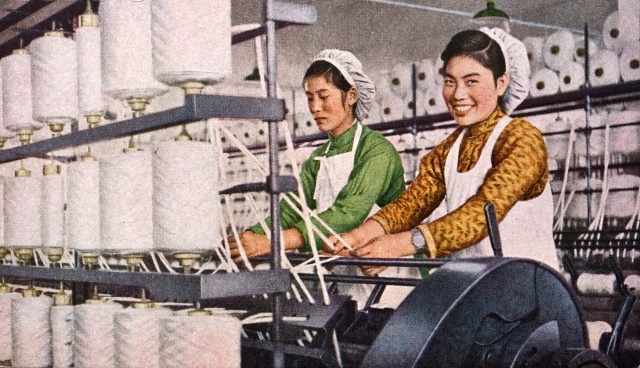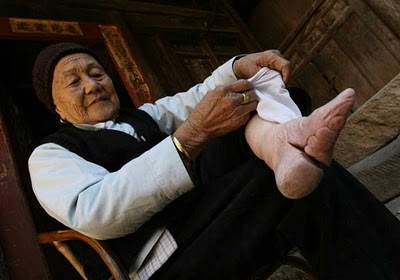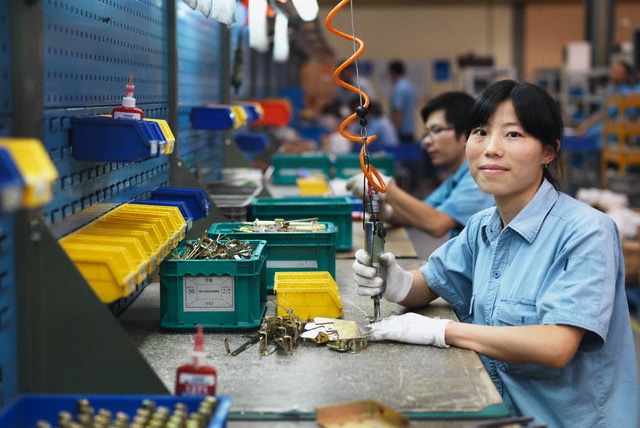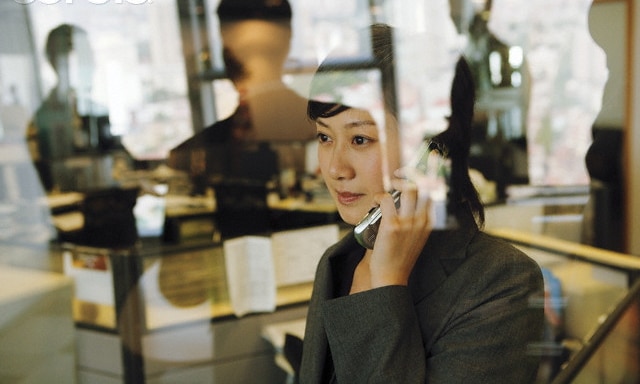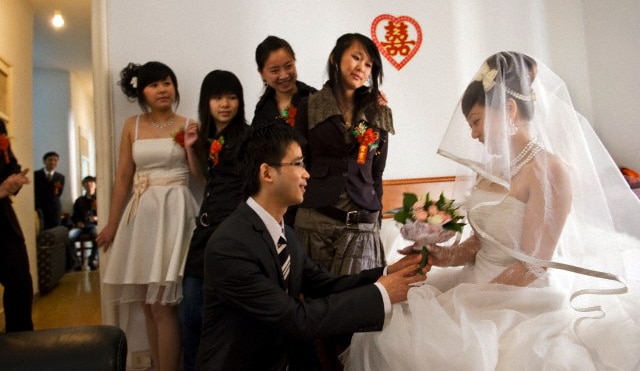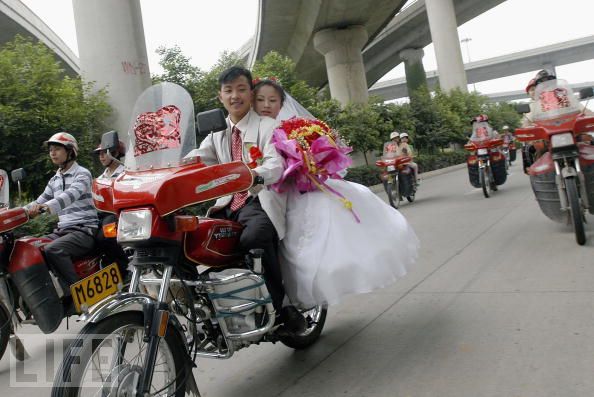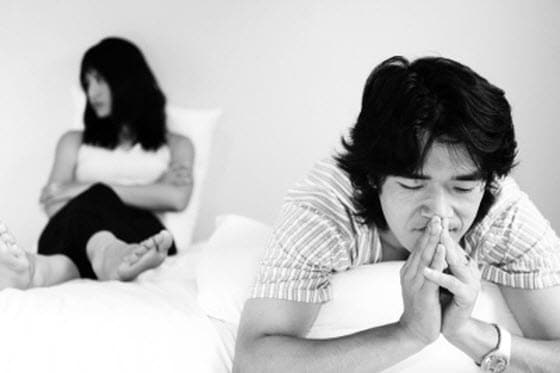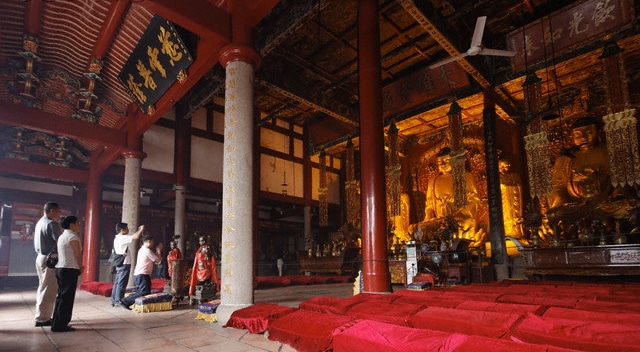These are China Mike’s 100% verified, no B.S. facts about Women, Marriage, & Divorce in China.
China facts: CHINESE WOMEN
The Chinese practice of foot-binding on young girls and women lasted for about 1,000 years in China—starting in the 10th century and ending in the first half of the 20th century. The custom was first practiced by the elite as a status symbol of wealthy men who could afford wives who didn’t need to perform manual labor and existed solely to serve their husbands. The custom was officially ended after the Communists took power in 1949.
[Wikipedia “Foot Binding”]
Throughout Chinese history, only one women has ruled as China: Empress Wu Zetian (624-705) who took the throne during the Tang Dynasty. When she was only thirteen, she became a concubine to the Tang Emperor Taizong.
[Wikipedia “Wu Zetian” ]
The Empress Dowager Cixi (1835 –1908) was the defacto ruler of China and one of the most powerful women in Chinese history. Recent forensic tests revealed that she died of “acute arsenic poisoning”—with arsenic levels 2,000 times higher than normal.
[ Wikipedia “Empress Dowager Cixi”; “Arsenic killed Chinese emperor, reports say” Nov. 4. 2008 ]
Until the 20th century, most women were forbidden from going to school and learning written Chinese.
[Wikipedia “Nüshu script”; Wired “Lost Language” Feb. 2011]
The women of Hunan province invented a secret script called “Nüshu” (“women’s writing). The script was carefully guarded from men by women, who passed it from generation to generation through “sworn sisters” and mothers.
[Wikipedia “Nüshu script”; Wired “Lost Language” Feb. 2011]
More than half of Chinese (men and women) believe that a woman’s place is in the home, according to a survey by All-China Women’s Federation (ACWF). The survey also found that one-third of respondents believe that men are inherently more capable than women.
[ All-China Women’s Federation: women.org.cn ]
EQUALITY & THE RISE OF CHINESE WOMEN
After taking control in 1949, the Communists gave women the right to legally divorce their husbands. Arranged marriages, child marriages, concubines, and foot binding were also officially banned.
[ Wikipedia “Chinese marriage” “New Marriage Law”]
After 1949, the percentage of girls attending school jumped from about 20% to over 96%.
[ Wikipedia “Globalization and women in China” ]
In the 1950s, women in China contributed just 20% of household income. By the 1990’s, that number rose to about 40% in the 1990s, before reaching 50% in 2009, according to Shaun Rein, managing director of the China Market Research Group.
[ Newsweek “Chinese Women Go Shopping” Aug. 27, 2010 ]
Today, Chinese women account for 44% of China’s work force.
[ Wikipedia “Globalization and women in China” ]
Three quarters of Chinese women say that they’re the ones who control the family purse strings, according to a 2010 MasterCard report. According to Master-Card vice president Georgette Tan, the country’s 650 million women are an “emerging powerhouse within the powerhouse” of China. They are the reason that China shopping has seen such a huge boon the past decade.
[ Newsweek “Chinese Women Go Shopping” Aug. 27, 2010 ]
Q: What % of the world’s top 20 richest self-made women are Chinese? Find out in China facts: RICH, POOR, INEQUALITY & LUXURY GOODS.
Chinese women “appear to be far more ambitious than their counterparts in the United States”. According to the New York–based Center for Work-Life Policy, about two thirds of college-educated Chinese women describe themselves as “very ambitions” (compared to about one-third in the U.S.). Further, over 75% of women in China aspire to hold a top corporate job, compared with just over half in the U.S.
[ Newsweek “The Women Who Want to Run the World” Aug. 27, 2010 ]
“Du Lala’s Rise”— a novel about a fictional Miss Du’s rise up the corporate ladder—spent 141 weeks on the Chinese bestseller list. The book also spawned two sequels and one of 2010’s top films at the box office.
[ Newsweek “The Women Who Want to Run the World” Aug. 27, 2010 ]
China has a greater percentage of women in its Parliament (21.3%) than the U.S. does in Congress.
[ Newsweek “The Women Who Want to Run the World” Aug. 27, 2010 ]
About eight out of 10 companies in China had women in senior management roles, compared with approximately half in the European Union and two thirds in the U.S., according to Grant Thornton International. Similarly, in China, 31% of top executives are female, compared with 20% in America.
[ Newsweek “The Women Who Want to Run the World” Aug. 27, 2010 ]
China facts: WEDDINGS & MARRIAGE
The Chinese don’t give gifts as wedding presents. Instead, they give a hong bao (“red envelope”) with cash. The amount of money is chosen to avoid the unlucky number four (which sounds like the word for “death”) and favor the lucky numbers 8 and 9.
[ Wikipedia “Wedding reception” ]
Q: What was the record-breaking amount paid for a license plate featuring the lucky number 8? Find out in China facts: CHINESE SUPERSTITIONS.
Before De Beers—the world’s largest diamond company—started marketing diamonds in China in 1993, there was no Chinese tradition involving an engagement ring or diamond wedding band (instead, jade and gold were commonly used).
[ Forbes “Wedded to the West” March 28, 2005” ]
Today, China is second largest diamond market in the world (US$1.5 billion in 2009 sales), behind only the U.S. In 2010, De Beers reported record sales of US$5.9 billion, credited to “extraordinary growth in China and India”.
[ Forbes “Why Diamonds Are China’s Friend” Jan. 25, 2010; China Post “De Beers turns profit on diamond boom year” Feb 12, 2011]
“Lightning weddings” –often followed by correspondingly fast divorces—are a rising trend of China’s “me generation”.
[ NPR “’Lightning Divorces’ Strike China’s ‘Me Generation’” Nov. 17, 2010 ]
CHINA’S RISING DIVORCE RATES
Chinese culture has traditionally leaned heavily against divorce. An ancient proverb admonishes newlyweds to “be married until your hair turns white.” In feudal China, it was shameful for women to marry more than once; divorced women were were called “po xie” (old shoe).”
[ CNN “Divorce rate rises in China” June 18, 2010 ]
Until 2003, couples seeking divorce required written permission from employers or neighborhood committees and “many couples were forced to stay in ‘dead marriages’ just to keep their privacy and avoid public stigma.” However, China’s marriage law was revised in 2003 to drop the requirement and make it easier for couples to split.
[ CNN “Divorce rate rises in China” June 18, 2010 ]
China’s divorce rate is skyrocketing with one in every five marriages ending in divorce today—which is double the rate a decade ago.
[ NPR “’Lightning Divorces’ Strike China’s ‘Me Generation’” Nov. 17, 2010 ]
Today, Beijing has the highest divorce rate in the country—with 39 percent of all marriages ending in a split.
[ NPR “’Lightning Divorces’ Strike China’s ‘Me Generation’” Nov. 17, 2010 ]
“Chinese-Style Divorce” was one of the most popular soap operas in China. It was about a struggling couple, whose marriage eventually fell apart in the face of misunderstandings and financial stresses.
[ NPR “’Lightning Divorces’ Strike China’s ‘Me Generation’” Nov. 17, 2010 ]
China facts: BRIDE KIDNAPPING
Because of the One Child Policy, China will have about 30 million more men than women by 2020, according to a report by China’s State Population and Family Planning Commission.
[ Wikipedia “Women in the People’s Republic of China”]
Bride kidnapping—which was more common in the past—still occurs today in mostly poor, rural areas of China.
[Wikipedia “Bride kidnapping” ]
The 2007 film “Blind Mountain” was about a woman who was kidnapped and sold into marriage. The directors filmed several alternate endings to satisfy the Chinese film censorship board. Audiences gave it a standing ovation after a Cannes Film Festival screening.
[Wikipedia “Blind Mountain” ]
In 2000, China sentenced four men to death for raping, kidnapping, and selling poor rural women as brides during a government crack down on trafficking of women and children. The crackdown freed 110,000 women and 13,000 children.
[Wikipedia “Bride kidnapping”; BBC News “China to execute bride traffickers” Oct. 20, 2000]
Zhu Wenguang—a security guard dubbed “Zorro” by the Chinese press—has made it his mission to track down and rescue women abducted and sold into marriage by traffickers. In 2004, he established the Zorro Rescue Center and had been responsible for saving 60 abducted women and children.
[ Newsweek International “The Mark of Zorro” April 2, 2001; Xinhua News “Chinese ‘Zorro’ Establishes Rescue Center” May 8, 2004]
NEXT: China Facts: ELDERY, CHILDREN & ADOPTION >>
Return to Facts about China home page

